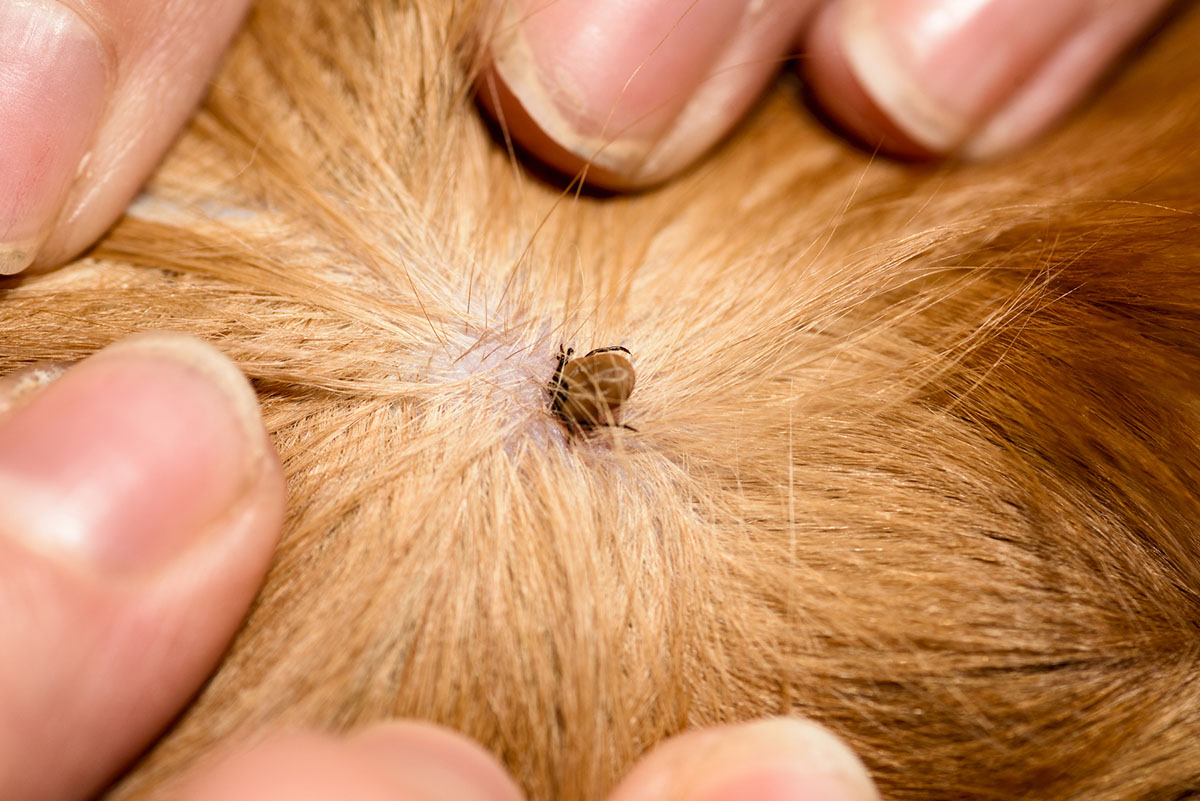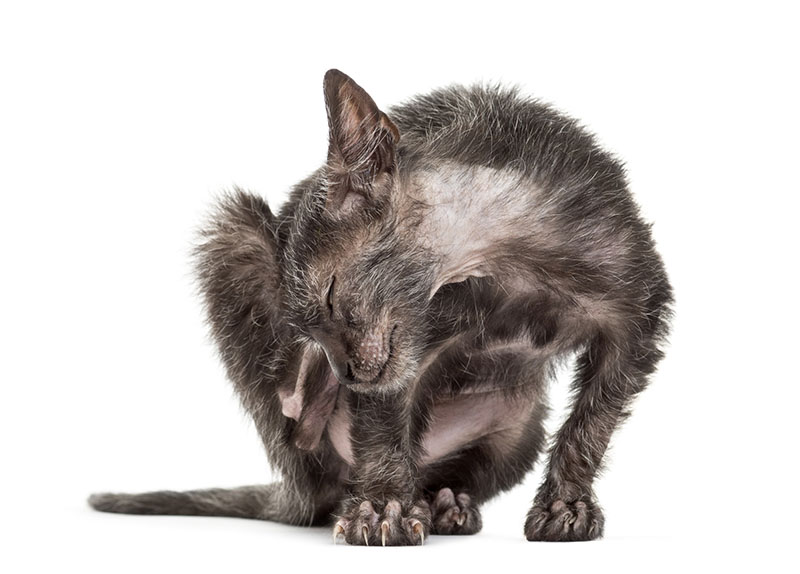Project Description
Ticks are small spider-like acarids and fleas are insects, but these two tiny creatures have at least one thing in common – they are both parasites that feed on your cat’s blood and can cause a lot of discomfort and more serious health problems. Flea bites may go unnoticed on some pets, cause slight irritation in others and produce extensive itching, red lesions, hair loss and even ulcers in those animals with flea allergy dermatitis, which is the result of extreme sensitivity to flea saliva. Severe flea infestations can cause anemia, especially in kittens. Fleas can also transmit several diseases, as well as tapeworm. Ticks are “vectors” or carriers of a number of diseases, including Lyme disease and Rocky Mountain spotted fever which can sometimes be transmitted to humans.

About fleas…
Adult fleas are wingless insects, generally smaller than a sesame seed, who feed on the blood of animals. Their proportionately enlarged back pair of legs gives them an extraordinary jumping ability. Hanging on to your pet’s fur with their claws, their needle-like mouth parts bite through the skin to suck up blood – in quantities of up to 15 times their body weight daily in the case of female cat fleas. If one flea finds your cat an attractive food source, you can be sure that other fleas will, too! They mate, with females laying 30-50 eggs per day. These eggs will drop to the ground within 8 hours and, as soon as 2 days later flea larvae will hatch and hide in dark places on the ground, on carpets or in upholstery. After about a week of feeding on adult flea droppings, crumbs, flakes of skin, etc., the larvae spin cocoons to become pupae. The pupae can remain in this stage for very long periods of time. As early as a week later, the pupae develop into adult fleas and emerge from their cocoons when they sense that a cat or other animal host, is near. The cycle – which can take as little as 12 days or as long as 180 days – can then begin again.

And ticks…
Ticks are wingless creatures that live exclusively on the blood of animals for three of the four stages of their life cycle. They are equipped with an apparatus called Haller’s organ which senses heat, carbon dioxide and other stimuli to allow the ticks to locate the presence of an animal food source. Once found, they crawl on and embed their mouth parts into the animal’s skin and proceed to suck up its blood. You should inspect your pet regularly for ticks, especially if they have been outside in areas where there are woods or tall grasses. A thorough combing within 4 to 6 hours of exposure to such environments can help prevent ticks from attaching themselves to feast on your pet. Should you find a tick, it should be removed immediately, as the longer it is attached to its host, the greater the chance for disease. Do not touch the tick. Wear gloves and use tweezers to carefully grasp the exposed section of the tick’s body near your pet’s skin. Gently pull until the tick lets go. To dispose of the tick, wrap it in several tissues and flush it down the toilet. Do not crush, burn or suffocate it, as any one of those actions may spread infectious bacteria.
Around the House
The following tips can help ensure that your pet enjoys a long, happy and accident-free life in your care.
- Screen windows to guard against falls.
- Don’t let young pets out on balconies, upper porches or high decks.
- Many house plants, including dieffenbachia, elephant ear, spider plants and more are
poisonous if eaten. Remove them or put them out of reach in hanging baskets. - Kittens love to chew when they’re teething, so unplug, remove or cover electrical cords.
- Don’t leave a room where a fire is lit or a space heater is being used unattended.
- Plastic bags may be fun to play with, but they can suffocate.
- If your pet can put something in his mouth, he probably will. Don’t leave small, sharp, easily
swallowed objects lying around.
- Cats enjoy naps near a warm engine so, before you drive off, honk your horn and make
sure your pet is not under or near the car. - Pets like the smell and taste of antifreeze and windshield washer. Tightly cover their
containers and wipe up any spills. - Paint, gasoline and other dangerous chemicals should be stored out of reach.
- Never leave burners or irons on unattended.
- Dangerous household chemicals such as bleach and ammonia should be stored out of your pet’s reach.
- Close washer and dryer lids – your pet might climb in and become trapped.
- Keep toilet lids down – small pets can actually drown if they fall in.
- Medicines, shampoo, suntan lotions and other personal care items can kill your pet. Make sure he can’t get hold of them.
- Some outdoor plants, like ivy and oleander, can be poisonous to pets.
- Keep pets away from lawns and gardens treated with chemicals.
- Store garden tools and chemicals securely. Keep garden sheds locked.
- Cover swimming pools and hot tubs – your pet might fall in and not be able to get out.
Tips about Ticks
A female tick can lay up to 3,000 eggs.
Except for eggs, ticks need a blood meal to progress to each stage of their life cycle.
Some ticks can live for more than a year without a meal.
In very rare cases, toxins secreted by ticks can cause pet paralysis.
